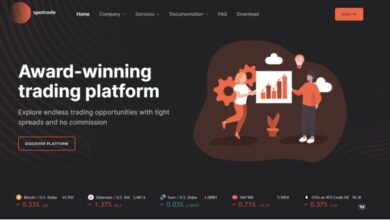The Futuristic Approach to CBD Trends and Innovations to Watch

Since the legalization of hemp-derived CBD in 2018, the cannabidiol industry has grown rapidly. It is estimated that only in 2013 will the global market hit $9.4 billion, and it is not going to go down. After so much research and study, experts suggest that we can get more significant benefits from cannabidiol. CBD has become incredibly popular, and its future looks bright. Let’s explore the trends and advancements that will shape the future of CBD.
Emerging Trends in CBD
- Increased Scientific Research: To make this product more useful, scientists are constantly studying CBD to understand its benefits better. They tend to focus on various fields in which they can use CBD in more useful ways. Research is focusing on how CBD can help with mental health, chronic pain, and neurological disorders. As more studies are completed, we will have a clearer picture of CBD’s potential.
- New Product Formats: After increasing demand and popularity for CBD Öl , we can see a variety of new products in the CBD market. Adults consume CBD in various forms, including CBD-infused beverages, edibles, skincare products, and even pet products. Innovations like inhalers and transdermal patches are also emerging as new trends while offering more ways to use CBD.
- Enhanced Extraction Methods: New extraction procedures are being adopted by many industrialists to improve the potency and purity of the CBD. Techniques like nanotechnology are being used to enhance absorption and make the product more effective.
- Entrance of block chain technology in industry: Recently, block chain technologies are helping products to ensure authenticity and traceability. This technology provides quality control and builds consumer trust by verifying product origins and ingredients.
- Market Expansion: The national and international market for CBD is growing rapidly. With significant growth in Europe, Asia, and Latin America, as cultural acceptance increases and more regions legalize CBD, the market will continue to grow.
- Entry of Big Players: Big industrialists and pharmaceutical companies are now showing more interest in various products of CBD, including CBD 10, CBD 20, CBD 30, CBD 40, and CBD 50. Their involvement will drive innovation and possibly lead to market consolidation, which will offer consumers more options in products.
- Consumer Education and Awareness: Various websites, influencers, and healthcare professionals are playing a key role in spreading awareness about CBD. Because of all these efforts, public attitudes towards CBD are becoming more positive. However, more research and studies are continuing to address myths and concerns related to the hemp plant.
- Rapid Growth in the Pet CBD Market: one of the fastest-growing segments in the market for CBD is pet products. Many pet owners are now turning themselves towards CBD to help their pets with anxiety, pain, and their overall health. While going into 2025, it is better to get your hands on more CBD products, especially if you’re a CBD merchant or want to boost your supply chain. However, pet owners are more concerned about the quality of the product they are using for their pets. Therefore, it is recommended to Cannabisöl bestellen, or order CBD oil from a reputable company that uses only organic products.
Future Challenges
CBD products are now entering a booming business, and the market is now crowded with various CBD product brands and retailers. Most people have turned to CBD because of its potential health benefits, including anxiety, relaxation, and various health conditions. Navigating complex regulatory landscapes is a challenge for the CBD industry. With so many CBD products available, the market could become saturated. Companies need to innovate and differentiate their products to stay relevant and competitive. As customers become more and more educated about CBD, it is better to add an extra layer of transparency and quality assurance. Providing detailed information about product sourcing, testing, and benefits can help build trust and loyalty among consumers.





